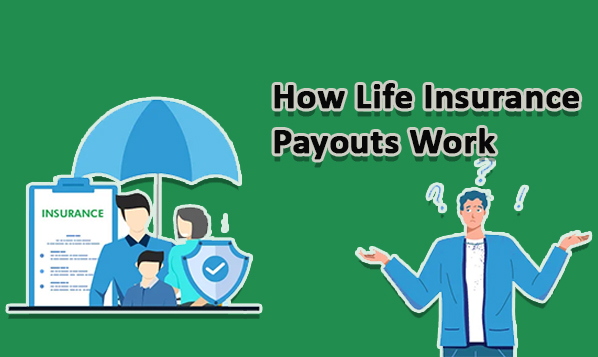When a family member passes away, one of life’s most trying times, life insurance gives loved ones financial stability. However, how do payouts from life insurance work? Policyholders and beneficiaries can feel more prepared and confident if they understand the procedure.

The policy’s beneficiaries are entitled to a death benefit, a lump sum payment to relieve financial strains. Upon the insured’s passing, this may include burial expenditures, unpaid bills, or continuing living expenses. However, the procedure entails particular actions, records, and schedules that may differ according to the insurer and policy type. This article explains how life insurance payouts work and provides other related information.
What Are Life Insurance Payouts
Life insurance payouts can work if the amount an insurer provides to policyholders’ beneficiaries in case of their death while coverage is still in effect. To verify the claim, the insurer examines the policy terms, death certificate, and other pertinent records. The insurance pays out the death benefit after approval.
It is crucial to determine how much your loved ones will require in the event of your death when applying for life insurance. Life insurance benefits are admissible if the claim is legitimate, the policyholder paid monthly premiums, submitted a true application, and died by suicide within the first year. There may be additional terms and conditions.
Life Insurance Payout Options
After you accept the beneficiaries’ claims, many life insurance policies pay in one lump sum. Beneficiaries may also have the choice of a retained asset account or even a life insurance annuity, depending on the insurer. The alternative for life insurance payouts works as follows:
Lump sum payout
Your entire share of the death benefit is distributed tax-free, either by check or straight into your bank account in a lump-sum transaction. You may want to divide the deposit among many accounts if your payoff exceeds $250,000. The FDIC covers only deposits up to $250,000 per depositor and per insured bank.
Annuity payout
The beneficiary of a life insurance annuity receives a consistent flow of income. The insurer keeps the remaining sum in an interest-bearing account until the death benefit is fully paid out, with regular payments over a certain period. Interest received on the remaining death benefit may be taxable, and this life insurance payment option isn’t always accessible.
Retained asset account
Some life insurance companies allow you to keep your payoff in a retained asset account, from which you can take money out as needed. Similar to a bank account, the account bears interest and allows you to withdraw money whenever you want. While any interest gained might be taxable, the initial insurance payout is tax-free.
How Long Does It Take For Beneficiaries to Receive Life Insurance Money
After the beneficiary files a claim, life insurers usually require 14 to 60 days to pay out the death benefit. This is because they need to validate the beneficiaries’ identities and check the policy conditions and the policyholder’s death certificate.
How Much Does Life Insurance Payouts
The defined death benefit of a life insurance policy is normally paid out. However, if the policyholder took out a loan against the cash value of the policy or employed a life insurance rider, the death benefit may be less, particularly in whole life or other permanent life plans.
Are Life Insurance Payouts Taxable
Although life insurance payouts are often tax-free, there are some circumstances in which taxes can be due. These consist of estate tax, interest income, and the Goodman triangle. The interest component of the death benefit can be subject to income tax if it accrues interest before distribution.
The death benefit can get a gift and is subject to gift tax if the policyholder, insured, and beneficiary are three distinct individuals. The payout may be taxable to the policyholder’s estate and potentially subject to estate taxes. This is if it is made to their estate instead of a designated beneficiary. Beneficiaries can prepare for future tax obligations and offer tailored advice based on unique situations by being aware of these exceptions.
How You Get Life Insurance Payouts
To obtain the death benefit if you are a beneficiary of a deceased person, get in touch with the insurance provider. If the insurance finds out about the death, they will get in touch, although they might not be aware of it until you get in touch with them. For this reason, when naming beneficiaries, policyholders should notify all of them, both primary and contingent.
You must file a short claims form, which requires a death certificate, policy number, and Social Security number (this is how Prudential’s first step looks). The life insurance company will pay you after verifying the death and ensuring it was covered, excluding suicide or unlawful activities.

